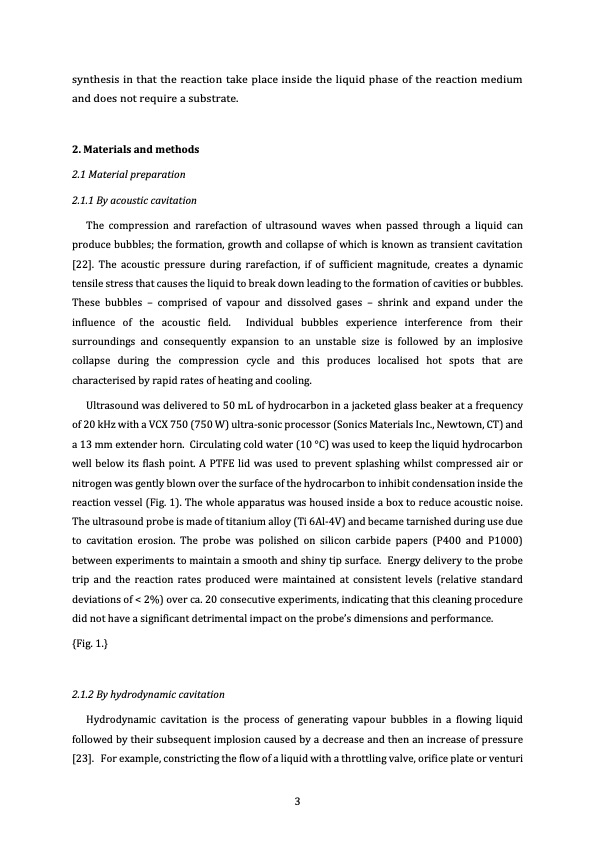PDF Publication Title:
Text from PDF Page: 004
synthesis in that the reaction take place inside the liquid phase of the reaction medium and does not require a substrate. 2. Materials and methods 2.1 Material preparation 2.1.1 By acoustic cavitation The compression and rarefaction of ultrasound waves when passed through a liquid can produce bubbles; the formation, growth and collapse of which is known as transient cavitation [22]. The acoustic pressure during rarefaction, if of sufficient magnitude, creates a dynamic tensile stress that causes the liquid to break down leading to the formation of cavities or bubbles. These bubbles – comprised of vapour and dissolved gases – shrink and expand under the influence of the acoustic field. Individual bubbles experience interference from their surroundings and consequently expansion to an unstable size is followed by an implosive collapse during the compression cycle and this produces localised hot spots that are characterised by rapid rates of heating and cooling. Ultrasound was delivered to 50 mL of hydrocarbon in a jacketed glass beaker at a frequency of 20 kHz with a VCX 750 (750 W) ultra-sonic processor (Sonics Materials Inc., Newtown, CT) and a 13 mm extender horn. Circulating cold water (10 °C) was used to keep the liquid hydrocarbon well below its flash point. A PTFE lid was used to prevent splashing whilst compressed air or nitrogen was gently blown over the surface of the hydrocarbon to inhibit condensation inside the reaction vessel (Fig. 1). The whole apparatus was housed inside a box to reduce acoustic noise. The ultrasound probe is made of titanium alloy (Ti 6Al-4V) and became tarnished during use due to cavitation erosion. The probe was polished on silicon carbide papers (P400 and P1000) between experiments to maintain a smooth and shiny tip surface. Energy delivery to the probe trip and the reaction rates produced were maintained at consistent levels (relative standard deviations of < 2%) over ca. 20 consecutive experiments, indicating that this cleaning procedure did not have a significant detrimental impact on the probe’s dimensions and performance. {Fig. 1.} 2.1.2 By hydrodynamic cavitation Hydrodynamic cavitation is the process of generating vapour bubbles in a flowing liquid followed by their subsequent implosion caused by a decrease and then an increase of pressure [23]. For example, constricting the flow of a liquid with a throttling valve, orifice plate or venturi 3PDF Image | graphene platelets with partial oxidation via cavitation

PDF Search Title:
graphene platelets with partial oxidation via cavitationOriginal File Name Searched:
Sonochemistry-Chester-Rep.pdfDIY PDF Search: Google It | Yahoo | Bing
Salgenx Redox Flow Battery Technology: Power up your energy storage game with Salgenx Salt Water Battery. With its advanced technology, the flow battery provides reliable, scalable, and sustainable energy storage for utility-scale projects. Upgrade to a Salgenx flow battery today and take control of your energy future.
CONTACT TEL: 608-238-6001 Email: greg@infinityturbine.com (Standard Web Page)